Hi i am very new for Auto-layouts and in my project i have added Two UIViews programmatically using Auto-layouts and i have added two UIButton which are Next and Back button and when i click Next button i push MyFirst UIView to second UIView using UIView animations and when i click Back button i push back from Second UIView to First UIView ok Everything is all right based on my code
But here my main problem is when i change First UIView orientation in simulator at portrait to landscape then Second UIView overlapped on my First UIView, And i know that it is must be Constrains issue i mean i have to remove and adding Constraints each time when we change Orientation for this i have tried below code but that's not working please help me and for this i have tried since long time but no one saying right answers using constrains
when we run program at portrait mode screen is coming like image1 and when i change land scape mode second UIview overlapped on my first UIview like below second image that's my main problem
my code:-
#import "SubViewController.h"
@interface SubViewController (){
UIButton * GoNext;
UIButton * GoBack;
NSArray * FHorizental;
NSArray * FVertical;
NSArray * SHorizental;
NSArray * SVertical;
}
@end
@implementation SubViewController
@synthesize MyFisrtView,MySecondView;
- (void)viewDidLoad {
[super viewDidLoad];
NSLog(@"How are you");
[self callAutolayouts];
MyFisrtView.hidden = NO;
MySecondView.hidden = YES;
}
-(void)callAutolayouts{
NSLog(@"Hi");
MyFisrtView = [[UIView alloc] init];
MyFisrtView.backgroundColor = [UIColor orangeColor];
MyFisrtView.translatesAutoresizingMaskIntoConstraints = NO;
[self.view addSubview:MyFisrtView];
MySecondView = [[UIView alloc] init];
MySecondView.backgroundColor = [UIColor lightGrayColor];
MySecondView.translatesAutoresizingMaskIntoConstraints = NO;
[self.view addSubview:MySecondView];
//Applying autolayouts for MyFirstView and MySecondView
NSDictionary * HeaderDictionary = NSDictionaryOfVariableBindings(MyFisrtView,MySecondView);
//Appliying Autolayouts for FirstView
FHorizental =[NSLayoutConstraint constraintsWithVisualFormat:[NSString stringWithFormat:@"H:|-0-[MyFisrtView]-0-|"]
options:0
metrics:nil
views:HeaderDictionary];
FVertical = [NSLayoutConstraint constraintsWithVisualFormat:[NSString stringWithFormat:@"V:|-0-[MyFisrtView]-0-|"]
options:0
metrics:nil
views:HeaderDictionary];
[self.view addConstraints:FHorizental];
[self.view addConstraints:FVertical];
//Appliying Autolayouts for SEcondView
SHorizental =[NSLayoutConstraint constraintsWithVisualFormat:[NSString stringWithFormat:@"H:|-0-[MySecondView]-0-|"]
options:0
metrics:nil
views:HeaderDictionary];
SVertical = [NSLayoutConstraint constraintsWithVisualFormat:[NSString stringWithFormat:@"V:|-0-[MySecondView]-0-|"]
options:0
metrics:nil
views:HeaderDictionary];
[self.view addConstraints:SHorizental];
[self.view addConstraints:SVertical];
GoNext = [UIButton buttonWithType: UIButtonTypeRoundedRect];
GoNext.frame = CGRectMake(50, 50, 100, 18);
[GoNext setTitle:@"Next" forState:UIControlStateNormal];
[GoNext addTarget:self action:@selector(GoNext:) forControlEvents:UIControlEventTouchUpInside];
GoNext.backgroundColor = [UIColor lightGrayColor];
[MyFisrtView addSubview:GoNext];
GoBack = [UIButton buttonWithType: UIButtonTypeRoundedRect];
GoBack.frame = CGRectMake(50, 50, 100, 18);
[GoBack setTitle:@"Back" forState:UIControlStateNormal];
[GoBack addTarget:self action:@selector(GoBack:) forControlEvents:UIControlEventTouchUpInside];
GoBack.backgroundColor = [UIColor orangeColor];
[MySecondView addSubview:GoBack];
}
-(void)GoNext:(id)sender{
MySecondView.hidden = NO;
MySecondView.frame=CGRectMake(248, 0, self.view.frame.size.width, self.view.frame.size.height); // starting visible position
[UIView animateWithDuration:0.5f
delay:0.0f
options:UIViewAnimationOptionBeginFromCurrentState
animations:^{
[self.view removeConstraints:self.view.constraints];
[self callAutolayouts];
[self.view setNeedsLayout];
[MySecondView setFrame:CGRectMake(0, 0, self.view.frame.size.width, self.view.frame.size.height)]; // final visible position
}
completion:nil];
}
-(void)GoBack:(id)sender{
MySecondView.frame=CGRectMake(0, 0, self.view.frame.size.width, self.view.frame.size.height); // starting visible position
[UIView animateWithDuration:0.5f
delay:0.0f
options:UIViewAnimationOptionBeginFromCurrentState
animations:^{
[self.view removeConstraints:self.view.constraints];
[self callAutolayouts];
[self.view setNeedsLayout];
[MySecondView setFrame:CGRectMake(MyFisrtView.frame.size.width, 0, self.view.frame.size.width, self.view.frame.size.height)]; // final visible position
}
completion:nil];
}
-(void)willAnimateRotationToInterfaceOrientation:(UIInterfaceOrientation)toInterfaceOrientation duration:(NSTimeInterval)duration{
if(toInterfaceOrientation == UIInterfaceOrientationPortrait){
NSLog(@"portrait");
[self.view removeConstraints:self.view.constraints];
[self callAutolayouts];
[self.view setNeedsLayout];
}
else if(toInterfaceOrientation == UIInterfaceOrientationLandscapeRight) {
NSLog(@"LandscapeRight");
[self.view removeConstraints:self.view.constraints];
[self callAutolayouts];
[self.view setNeedsLayout];
}
else if(toInterfaceOrientation == UIInterfaceOrientationLandscapeLeft) {
NSLog(@"LandscapeLeft");
[self.view removeConstraints:self.view.constraints];
[self callAutolayouts];
[self.view setNeedsLayout];
}
}
@end

